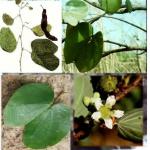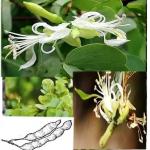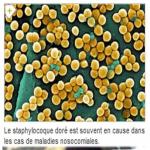Tobacco and its derivatives.
1-Identification
- French name: Tobacco
- Scientific name: Nicotiana tabacum
- Family: Solanaceae
- Vernacular names: Tobacco
- Active substances: Mixture of alkaloids: Anatabine, nomicotine, anabasine and several radioactive substances including polonium.
Parts Used: Sheets
Overview:
Dried tobacco leaves (in air or in the sun), cigarettes, cigars, loose for rolling or pipe, or chewing. The color and taste depend on the drying method. After drying, the leaves are fermented to obtain a specific taste. Leaf tobacco is classified according to its variety or the way it is dried. Brown tobacco is dried in air and on fire; blond tobacco is dried in hot air; light tobacco are dried in the air or in the sun.
Frequency
Tobacco use in the form of a cigarette is widely distributed throughout the world. Millions of people are poisoned daily with nicotine, tar, and many other poisons. The pharmacopeia uses tobacco leaves most often for external use.
Danger of tobacco
Tobacco contains nicotine, which has a "arousal", anxiolytic and hunger suppressant effect. There is evidence that tobacco contains radioactive products that cause long-term throat cancer. In addition Cigarettes, cigars and others contain additives the burning creates new components (carbon monoxide, tars...) harmful to health. For example smoking and alcohol increase blood pressure, increase heart rate, and damage arteries. People who smoke have twice the risk of coronary artery disease and twice the risk of death due to heart attack. These vascular risks also affect arteries of the brain and lower extremities. Chronic smokers have problems with endurance and are prone to respiratory system-wide disorders, including chronic bronchitis and lung cancer. The Nicotine increases gastric acid secretion and acts on the central nervous system. Tobacco limits the delivery of oxygen to the brain and muscles. It causes headache, dizziness, and sore throat. Tobacco is not made to be smoked, but to cure. Moreover, alcohol and tobacco weaken the immune defenses, irritate the inner lining (mouth, esophagus, stomach, intestine, etc.) and predispose to diseases such as high blood pressure, diabetes, ulcer, cancer, pneumonia, staphylococcal infection, etc.
What To Do?
Failing to prevent companies from producing cigarettes, young people need to be made aware of the need for a smoke-free life because the country needs them to be healthy unfit. Smoking and alcoholism are a grave public health problem. Once young people start smoking, it's hard to deter them. Women should not smoke, especially pregnant women, for fear of having children who smoke at birth and who can't stop smoking later. Women are less able to cope with the negative effects of alcohol and tobacco and are more depressed than men. All positive advertising on cigarettes must be removed. From cigarettes and alcohol to various drugs, there is only one small step. Large corporations and the powerful of this Everyone knows that to program a country’s downfall, it is enough to give its young people easy access to alcohol and drugs (tobacco, cocaine, morphine, etc.). We must avoid this by staying awake from alcohol and drugs.
Description
There are two tobacco categories: large tobacco and small tobacco. Large tobacco has a sturdy stem that often exceeds 2 meters. Also an annual herbaceous plant, the small tobacco only stands at 1 and sometimes 1.5 meters. Sheets of variable size and shape are wide and oval. They have a viscous texture and carry countless small velvety hairs. The limbs are devoid of petioles in the case of large tobacco; their decurrent base is inserted alternately on the stem. The main rib, visible and particularly hairy, is divided into 7 or 8 pairs of lateral ribs. The leaf of the small tobacco is supported by a petiole about 4 centimeters long: smooth or embossed, it often ends at the tip. The flowers of the big tobacco are reddish, white or pink, arranged in large cymes at the end of the stems. Long, glandular, viscous tubes support a corolla and calyx formed by several acuminate lobes. On the other hand, the flowers of the small tobacco, often yellow or greenish, have a smaller corolla and a calyx formed of triangular lobes. The fruit is an ovoid globular capsule inserted into the calyx, opening on its own at maturity: it reveals many small brownish seeds.
Habitat:
Tobacco was originally grown in South and Central America by pre-Columbian civilization. He entered tropical Africa at the end of the 16th century where his artisan culture was undertaken, especially around the villages. Today, tobacco is grown in almost every country.
Culture and treatment
Tobacco is a water-intensive plant during its vegetative period, but as it matures, moisture must decrease, especially in plants that have to grow into seeds. He likes fresh, light and mineral-rich soils, especially potash. Strong tobacco varieties prefer compact soils. As the optimum temperature for growth is between 19 and 25°C, mountainous climates are more beneficial. It is reproduced by seeds sown on the fly on a nursery board. Lifting takes place after 15 to 20 days. The planks are planted after 2 months in the open field on lines spaced 60 to 80 centimeters apart. It is necessary to protect the peripheral plants from the wind. Flowering begins 6 weeks after planting and 1 cycle loops after 3 months.
The first discolorations indicate the time of harvest. The tobacco leaves are dried in hot air, in traditional dryers or in greenhouses. The drying in hot air lasts one week and requires about 20 kg of wood to dry 1 kg of tobacco. The method of drying in hot air ranks first in its rate of use with about 6 tons of tobacco in 10 treated by this process.
2-Properties
Antiseptic, antibiotic, anti-inflammatory, emollient,
3-Therapeutic indications
Tooth decay, external hemorrhoids.
4- uses
—Dental caries
Tobacco chick, a tradition established in several African countries, helps prevent tooth decay. Use a mixture of 2j3 of tobacco with 1/3 of the alkaline ash. Chew regularly.
—Pediculosis and nodal inflammation.
Crushed or crushed leaves are used in friction on the head to attenuate pediculoses. The use of poultices It is also intended to fight inflamed lymph nodes.
—Smoking and alcohol abuse
Cure of ripe lemon juice.
NB: Smokers and alcoholics must drink a lot of curdled milk and regularly take a lemon juice cure.
Please reach us at http://wa.me//+22967546677
Click below to order clove oil
Book an appointment with lady feranmi on
Add a comment









